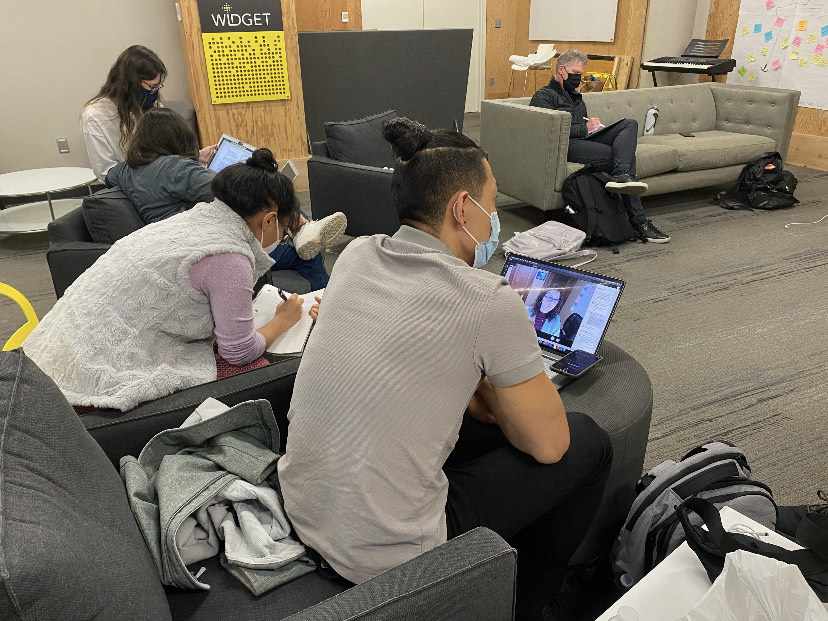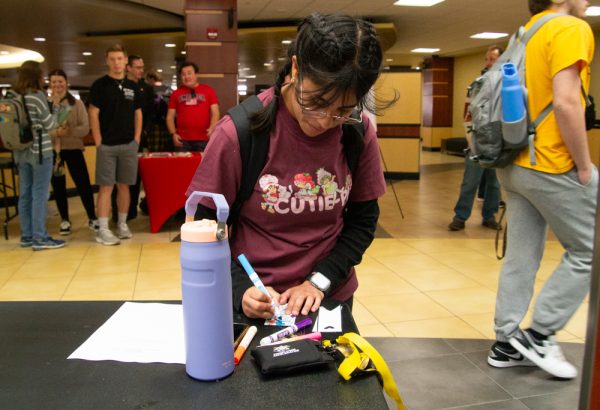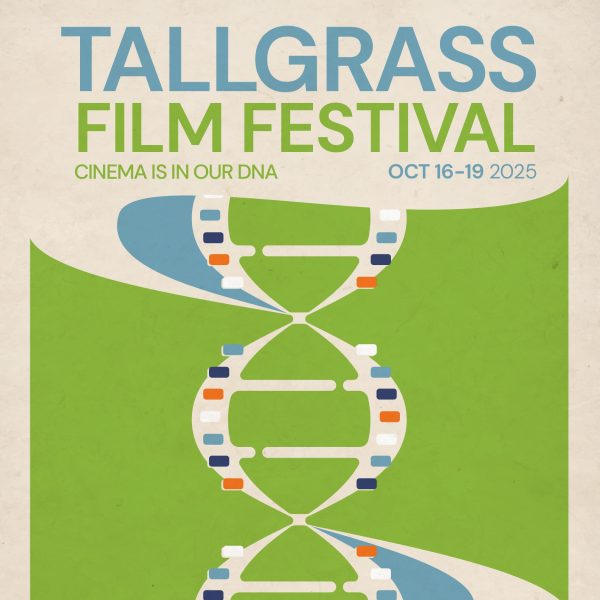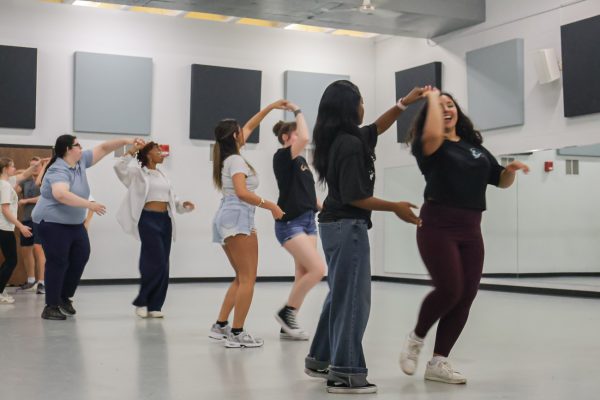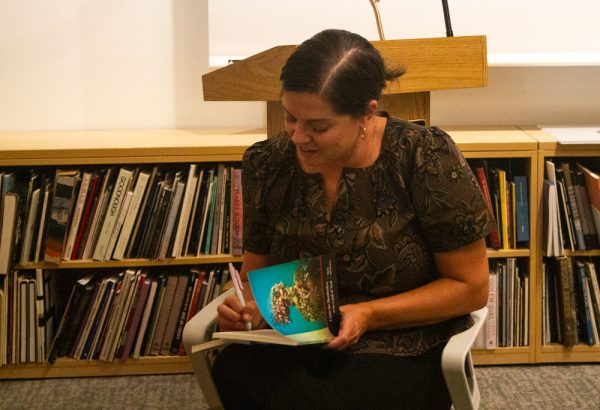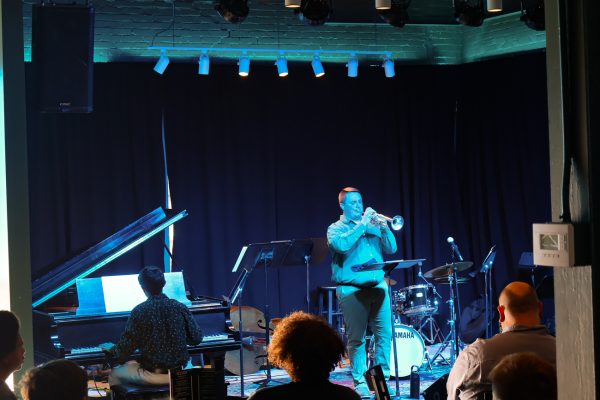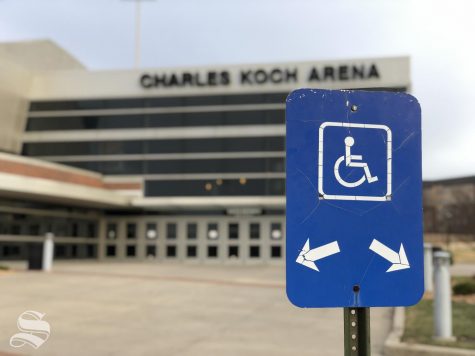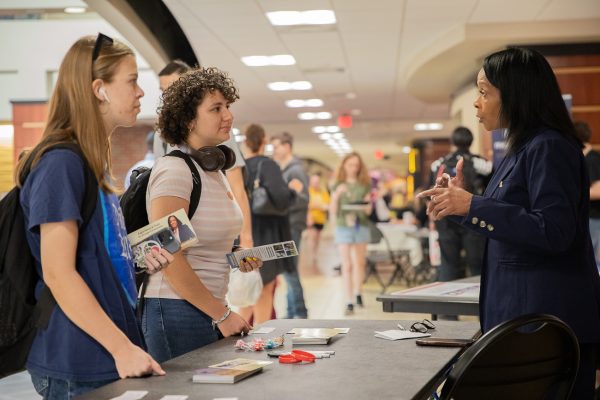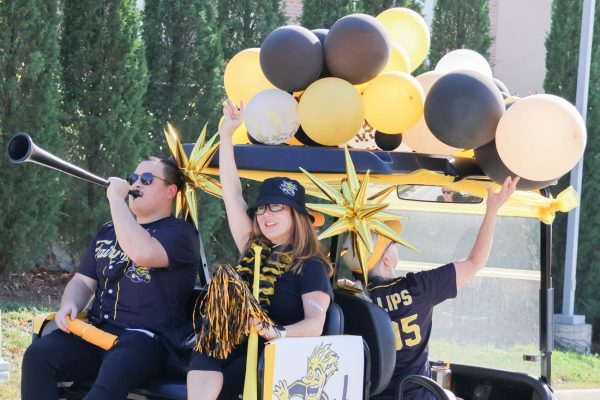WSU students design equipment that could be used in NASA’s next trip to the moon
Members of the Wichita State team work on their design for the NASA suits challenge.
NASA is planning on going back to the moon in 2024 and WSU students are hoping to be a part of the journey.
A group of eight WSU students, selected by faculty members of College of Innovation and Design, competed in the NASA SUITS challenge. Students who participate in the NASA SUITS challenge design and create space suit information displays within an augmented reality.
Colleges from all over the nation are participating in the challenge, including University of Maryland, University of Houston, Virginia Tech, and Oklahoma State University. This is the first time WSU has been a part of the project.
WSU’s team designed a head-mounted display for astronauts to wear when exploring moon territory. Jennifer Alfaro, a junior majoring in mechanical engineering, said that the moon only has three degrees of sunlight. Their display will help astronauts see enough to get from point A to point B.
Alfaro said that participating has allowed her and her team to step out of their comfort zones.
“It’s the first time we are doing it because it is a really challenging project and involves a lot of innovations,” Alfaro said. “So I think it was just putting ourselves out there and trying to challenge [ourselves] and leaning into discomfort.”
Maggie Schoonover, faculty director of the program, said that some of the College of Innovation and Design faculty were interested in the project and thought it would be a great opportunity to put some of the innovation and design practice to work in an applied learning setting.
“I’m hoping that they have an opportunity to build good relationships, not only with contacts at NASA, but with other professionals on the team and other students across campus,” Schoonover said.
Alfaro said that the team worked for a month on their proposal and was accepted Nov. 17. Now they are moving into the next stage of building their prototype. In March 2021 they will ship out their prototype to the Johnson Space Center to be evaluated.
Schnoover said that remote working has led to challenges.
“We’ve done most of our collaboration remotely, so it is a little bit difficult when you are trying to visualize this challenge with students who haven’t necessarily used the virtual collaboration tools before,” Schoonover said. “It hasn’t been too bad, but obviously virtual collaboration is a challenge for anyone.”
Alfaro said that the team’s goal is winning the challenge and having their idea used in the 2024 Artemis mission. They also want Wichita State to be a school known for participating in this challenge.
“At first I was like, ‘I don’t think I can do this, it sounds like too much for me,’ but I’m excited that people like me will get motivated to do this in the future,” Alfaro said.
Alfaro said that this experience has taught her to get out of her comfort zone. She is part of the design/assembly team, who are in charge of coming up with the videos on the head-mounted display. These include instruction on how to use tools and how the astronaut can take notes and take pictures when needed.
Alfaro said that she has been working on recruiting members in middle and high school, so that when they come to WSU they can become part of the project.
“That’s the main thing that i’m trying to do, is bring down this wall of people thinking, ‘Oh, I’m not an engineer, I can’t do that,’ because it is actually open to anyone, undergraduate or graduate students,” Alfaro said.
Schoonover said that the team is multidisciplinary, and they are looking for people of any major to become a part of this project in the future. They have students studying psychology, business, innovation and design, biomedical engineering, and mechanical engineering and they are all relevant to the team.
“We wish we had some geography or geology students because there is a lot of work that they do on the moon that is geology specific, but it’s completely multidisciplinary,” Schoonover said.
The team can be found on Instagram @nasa.suits.wsu.
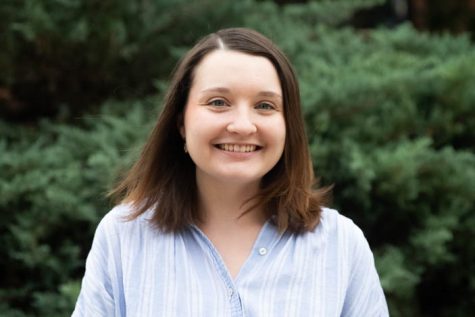
Julia Nightengale was a third-year reporter for The Sunflower, previously working as a Copy Editor and News Editor. Nightengale is a graduate student working...



